Top Dog Crates: 25 Best Picks for Comfort and Security
This post may contain affiliate links, which means I’ll receive a commission if you purchase through my link, at NO EXTRA COST TO YOU
Dog crates are a vital tool for dog owners, providing a safe and comfortable space for pets. They are useful for training, travel, and creating a secure environment for your dog. This comprehensive guide covers everything you need to know about dog crates, from choosing the right type and size to practical tips for crate training and maintenance. Whether you’re a new pet parent or a seasoned dog owner, this guide will help you make informed decisions and enhance your dog’s quality of life.
Choosing the Right Dog Crate
Types of Dog Crates
- Wire Crates:
- Pros: Good ventilation, visibility, collapsible for storage.
- Cons: Less aesthetic, can be noisy.
- Plastic Crates:
- Pros: More enclosed, great for travel, durable.
- Cons: Limited visibility, can be stuffy.
- Soft-Sided Crates:
- Pros: Lightweight, portable, ideal for small dogs and travel.
- Cons: Less durable, not suitable for chewers.
- Wooden Crates:
- Pros: Stylish, blends with home decor, sturdy.
- Cons: Heavy, not ideal for travel, can be expensive.
- Heavy-Duty Crates:
- Pros: Extremely durable, escape-proof, great for strong or anxious dogs.
- Cons: Heavy, expensive, less portable.
Choosing the Right Size
A crate should be large enough for your dog to stand, turn around, and lie down comfortably. Measure your dog’s length and height, and choose a crate that provides enough space while maintaining a cozy, den-like atmosphere.
Factors to Consider
- Dog’s Size and Weight: Ensure the crate can support your dog’s weight and accommodate its size.
- Purpose: Consider if the crate will be used for travel, home use, or both.
- Dog’s Behavior: For chewers or escape artists, opt for more durable crates.
- Portability: If you need to move the crate frequently, choose a lightweight or collapsible option.
Benefits of Crate Training
- Safety: Keeps dogs safe when unsupervised, especially puppies or dogs prone to chewing.
- Training: Effective for housebreaking and teaching boundaries.
- Travel: Provides a secure space for dogs during travel.
- Comfort: Creates a personal den-like space for dogs to relax and feel secure.
- Reduces Anxiety: Helps anxious dogs feel safe during stressful situations.
Introducing Your Dog to a Crate
Step-by-Step Guide
- Placement: Place the crate in a quiet but not isolated area of your home.
- Initial Introduction: Allow your dog to explore the crate with the door open. Use treats to create positive associations.
- Feeding Inside the Crate: Start feeding your dog meals inside the crate to build a positive connection.
- Gradual Closure: Once your dog is comfortable, close the door for short periods while you’re nearby.
- Extended Periods: Gradually increase the time your dog spends in the crate, always ensuring it’s a positive experience.
Tips for Success
- Never use the crate as punishment.
- Ensure the crate is comfortable with bedding and toys.
- Maintain a consistent routine to help your dog feel secure.
Maintaining and Enhancing Comfort
Cleaning and Maintenance
- Regular Cleaning: Clean the crate regularly to maintain hygiene. Use pet-safe cleaners.
- Check for Damage: Regularly inspect the crate for any signs of wear or damage.
- Bedding: Use washable bedding that fits the crate size.
Enhancing Comfort
- Bedding: Choose soft, comfortable bedding that is easy to clean.
- Toys: Provide safe toys to keep your dog entertained.
- Temperature Control: Ensure the crate is in a well-ventilated area, away from direct sunlight or cold drafts.
Troubleshooting Common Issues
Crate Aversion
- Gradual Introduction: Take more time with each step of introduction.
- Positive Reinforcement: Use treats and praise to encourage your dog.
- Consult a Professional: If issues persist, consider consulting a professional trainer.
Chewing and Destruction
- Durable Crates: Opt for heavy-duty crates if your dog is a chewer.
- Chew Toys: Provide appropriate chew toys to keep your dog occupied.
Anxiety
- Comfort Items: Include your dog’s favorite blanket or toy in the crate.
- Calm Environment: Keep the crate in a calm area of the home.
- Gradual Exposure: Slowly increase the time your dog spends in the crate to build comfort.
Top Dog Crates on the Market
Conclusion
Dog crates are an indispensable tool for dog owners, offering a blend of safety, comfort, and convenience. They play a vital role in various aspects of your dog’s life, from training to travel. Choosing the right crate is crucial. It should fit your dog comfortably and suit your needs. Proper introduction is key to helping your dog feel at ease. A well-maintained crate, kept clean and cozy, ensures your dog remains happy and secure. By serving purposes such as training, travel, and offering a secure retreat, a high-quality dog crate can, therefore, greatly enhance your dog’s overall well-being and daily comfort. Investing in the right crate means investing in your dog’s well-being.






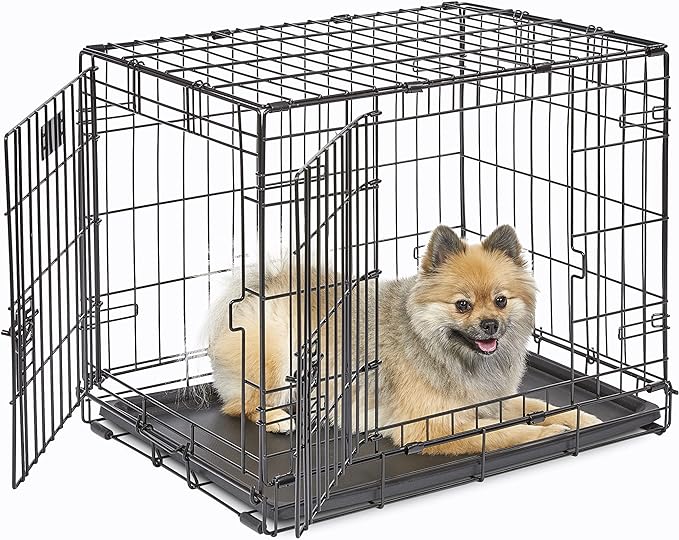




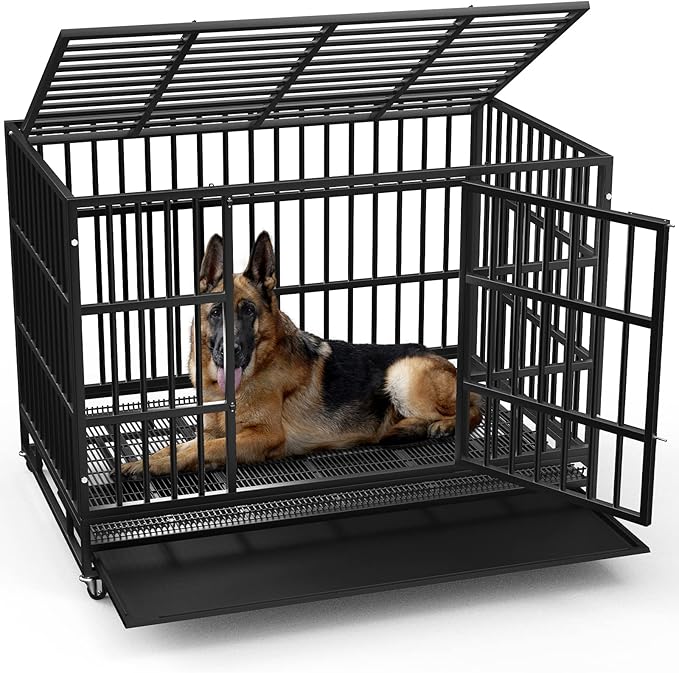
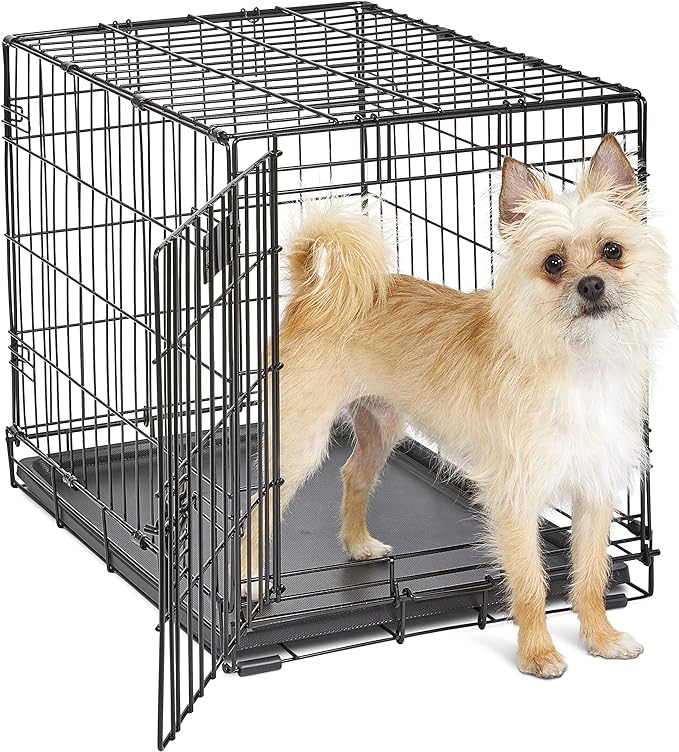




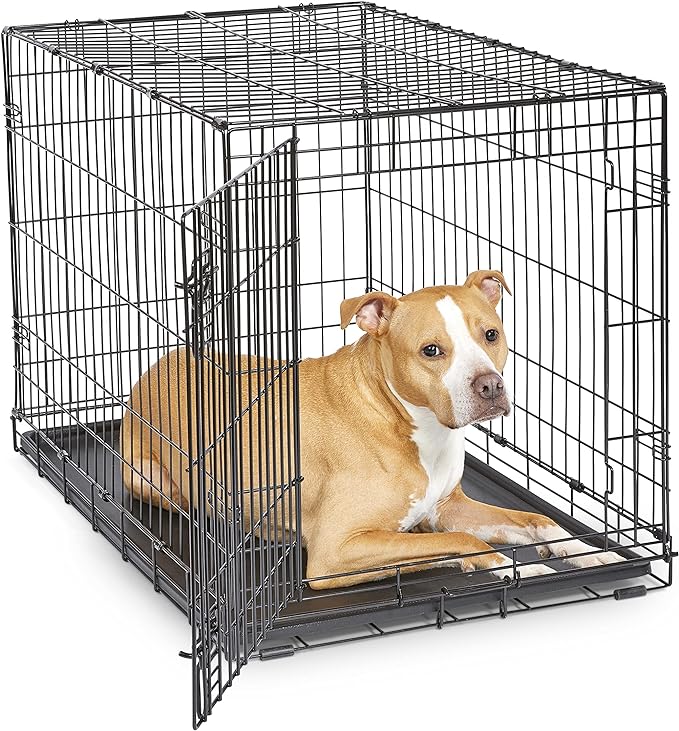


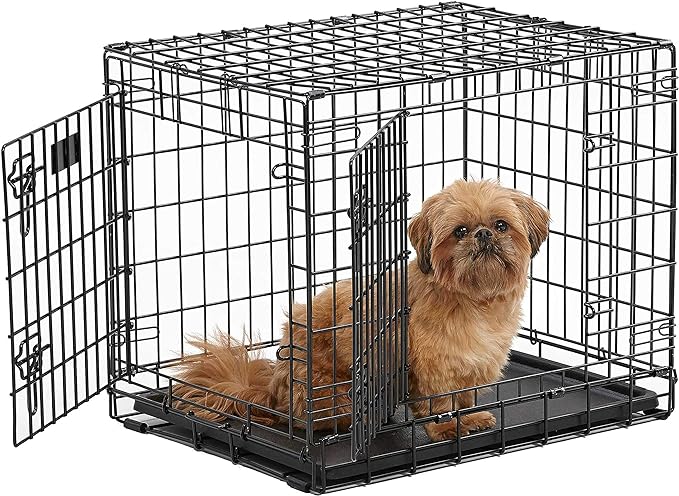

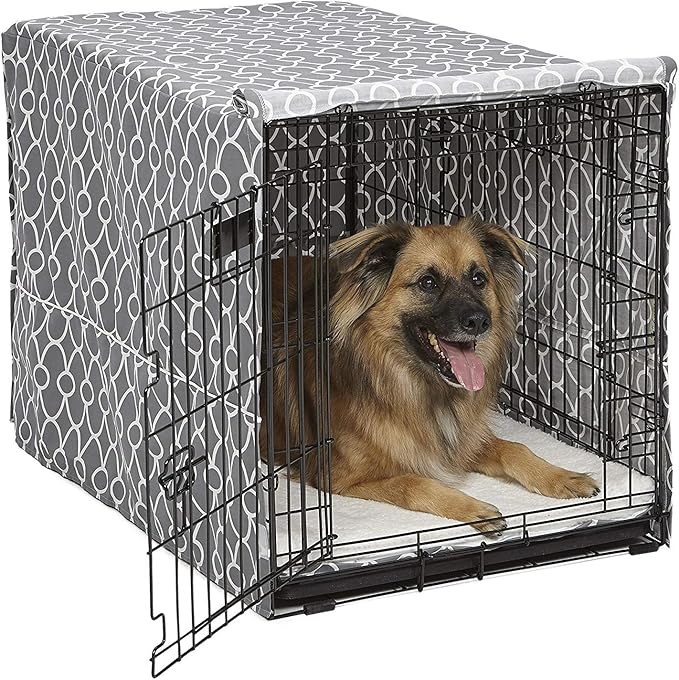

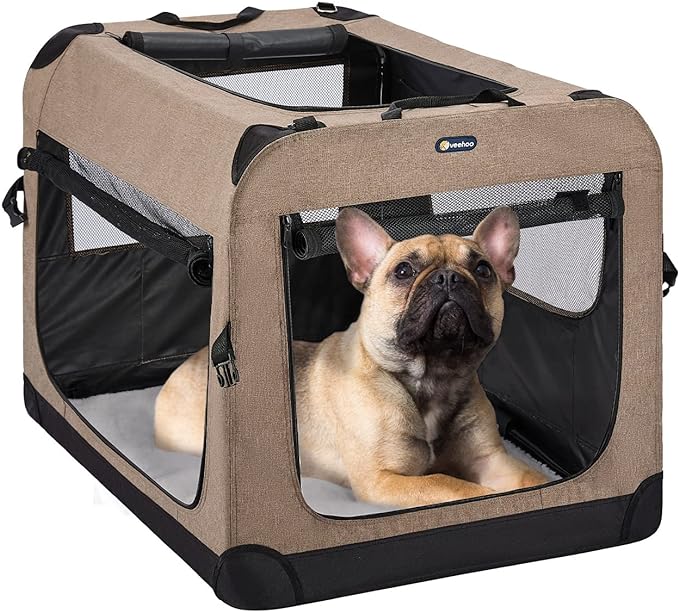





![[1 Crate, 3 Uses] Offers a safe haven for your dog, serves as a side table or nightstand for you, and easily blends in with your home decor and elevates your space—this dog crate meets everyone’s need, from your dog to you and your home
[Sturdy and Chew-Resistant] Made with durable particleboard and steel, this piece of dog furniture is sturdier and more chew-resistant than wooden dog crates, offering a lasting, stable, and safe retreat for your fur friend
[Door Left, or Door Right] You decide. This dog kennel comes with 2 doors (1 front door and 1 side door) for your dog to go in and out easily; the side door can be either installed to the left or right to fit various spaces
[2 Ways to Use the Tray] Put the tray under the bottom mesh to catch crumbs, fur, and dirt, keeping your dog's place clean without dirtying your floor, or place the tray above the mesh to offer your dog a flat, comfortable surface—it's up to you
[Choose the Right Size] With an internal size of 24.4" x 16.5" x 19.7", this dog crate is ideal for small dogs up to 30 lb (such as a Chihuahua, Yorkshire, Toy Poodle, Jack Russell, etc). Please measure the size of your dog to ensure it comfortably fits](https://hairypawpaw.com/wp-content/uploads/2024/07/91DcUjbqWEL._AC_SX679_.jpg)

